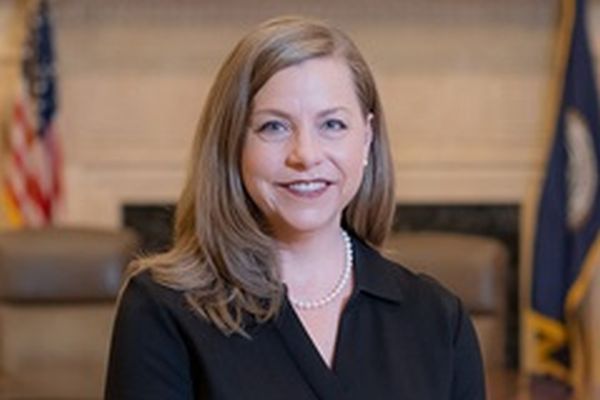Vice Chair for Supervision Michael S. Barr
I’m here today to discuss what we have learned from the recent turmoil in the crypto sector and what role supervision and regulation should play in helping banks manage their engagement with the sector and the innovative technologies that support it. Despite recent events, we have not lost sight of the potential transformative effect that these technologies could have on our financial system. And we need to be careful lest regulation lock in the power of incumbents or stifle innovation. But the benefits of innovation can only be realized if appropriate guardrails are in place. I am going to talk about how we are working to provide clarity to the banks we supervise about what we have learned and about our supervisory expectations. I will wrap up by sharing some thoughts on stablecoins.1
It isn’t hard to find evidence for the need to discuss crypto, but let me start with a recent personal experience. Last month, I visited the Mississippi Delta to talk about financial inclusion and community development, and I spent a morning talking with a group of college students. When I asked, it turned out that most of the students I met owned some crypto-assets. This surprised me because in my experience as a professor, most college students are usually strapped for cash. What didn’t surprise me is that many of those who said they owned crypto-assets also said they had lost money, and they weren’t very happy about that.
It was a reminder for me that crypto-assets aren’t just held by people with ample money for speculation. A fifth of Americans, many of them with limited savings, say they have owned some form of crypto.2 The problems that have come to light in the crypto sector over the past year may have affected a large segment of the public.
When I think about how to approach crypto-assets, the technology behind them, and the interaction between the crypto sector and traditional financial system, I find it helpful to place recent innovation in historical context. Innovation in financial markets has long raised questions about the appropriate role of regulation. Of particular concern is how the regulatory framework can serve both to encourage innovation and to support the safety and soundness of financial institutions and broader financial stability. Just as important is the need to protect the public from fraud and other abusive behavior.
The challenge here begins with a mismatch in timing. Innovation often comes quickly, but it takes time for consumers to become aware that they could both gain and lose money on new financial products. It may take time for market participants to understand attendant risks and come up with tools to manage them. Likewise, regulation involves a deliberative process—as it should because it needs to balance the risk that over-regulation will stifle innovation with the risk that under-regulation will allow for substantial harm to households and the financial system.
Long before crypto became an issue for regulation and public policy, I was grappling with how to think about the cycle of innovation in the context of the Global Financial Crisis. New products often develop slowly at first while market participants are unsure of their value or their risks, but excitement and enthusiasm can then lead to rapid growth and new products flood the market as a result.3 Participants assume too quickly that they know how the new products work, and novel products can appear both safe and lucrative, particularly if they have not been tested through bouts of market stress. The innovation cycle turns when this mismatch—between perceived understanding of risk and actual underlying risk—becomes apparent.
Back then, I was talking about some of the causes and consequences of the financial crisis. At that time, new types of financial products had become so intertwined with the banking and broader financial system that the turn in the innovation cycle resulted in devastating consequences for homeowners, workers, businesses, and our economy. Today, while the crypto-asset sector is more nascent and less pervasive, the questions about how new financial products will affect the public, the economy, and financial stability are similar. Innovation surges ahead, and regulation follows, trying to balance benefits and risks.
The Potential Benefits of Innovative Technologies
Before I get into how we are responding to developments in the crypto sector in our approach to supervision and regulation, I want to recognize the potential public benefits of the technologies underlying crypto-assets. It is often argued that these technologies will have extensive beneficial application beyond crypto-assets themselves.
The payments system is critical to everyday Americans. It is highly resilient but also can be slow and expensive. This is particularly true with respect to cross-border payments. The technology underlying crypto assets—including that which enables programmability—could bring new functionality or efficiencies to payments systems.
Proponents claim that distributed ledger technology, encryption, and new ways of validating transactions could be used to facilitate faster reconciliation, clearing, and settlement and reduce costs for a variety of traditional asset transactions—including, for example, by linking securities and cash markets in ways that are more difficult to achieve under our current financial infrastructure.4 Use of smart contracts could automate certain actions, creating further efficiencies. Such use of the technology could lead to potential operational efficiencies and reduced costs. The Federal Reserve has dedicated considerable resources to exploring and understanding these technologies and their potential benefits as well as the risks associated with these innovations.
A Few Lessons from the „Crypto Winter”
In contrast to the potential benefits of these technologies, there is the actual experience of the many people whose hope and enthusiasm for crypto-assets have met with disappointment and sometimes devastating loss. Robert Shiller describes how Bitcoin is a prime example of what he calls a contagious economic narrative. The story of Bitcoin’s value proposition taps into the fears of government control with the promise that, through superior technology, a new product can yield untold riches.5 But when it comes to certain crypto-assets, some of which have no intrinsic value beyond the faith of their owners, the law of gravity will eventually apply, as it did with the tulip frenzy in Holland more than 400 years ago. Experience has shown that crypto-assets can face the same fundamental liquidity and credit risks as traditional assets, and can be highly correlated with other traditional risks, rather than being hedges against such risks.
While purveyors of crypto-assets have represented to customers that they are protected through the decentralized nature of the underlying technology, customers are often at a greater risk because those purveyors often find ways to function outside a robust supervisory and regulatory system. In the absence of regulatory compliance, customers don’t have the information they need to assess and mitigate their risks. Investors do not have the structural protections they have relied on for many decades. As a result, many have been victims of classic cases of fraud and abuse—some appropriately classified as „Ponzi schemes” under a high-tech veneer. Moreover, while crypto-assets are hyped as „decentralized,” there has been an emergence of new, quite centralized intermediaries that are either not subject to or not compliant with appropriate regulation and supervision, which has perpetuated harm to consumers. Complicating matters further, these entities often seek out jurisdictions with loose or less developed legal and regulatory frameworks for financial activities. And the lack of consolidated home country supervision and coordination with host country supervisors rekindles the kind of abuses that bank regulators long ago quashed. While such cross jurisdictional regulatory arbitrage is not new, the digital nature of these activities provides for greater opportunity to expand the reach of such entities to customers around the world.
For example, the prominent collapse of the FTX crypto-asset trading platform has reportedly wiped out the holdings of a million people, costing them billions of dollars.6 Unfortunately, that is not the only example. Since last summer, we saw the collapse of one crypto intermediary after another.7 As these cases are working their way through the bankruptcy courts, we are seeing indications of misuse of client funds, misrepresentations, obfuscation about availability of deposit insurance, and potential fraud.
Crypto has also been implicated in numerous cases of illicit financing. Crypto-assets pose significant money laundering and terrorism financing risks due to the pseudonymous actors that are parties to transactions, the ease and speed of transfer, and the general irrevocability of transactions—all of which make crypto-assets attractive for use in money laundering and terrorist financing. Indeed, enforcement agencies—including the Financial Crimes Enforcement Network, the Office of Foreign Assets Control, and the Department of Justice—have taken numerous public enforcement actions against entities or individuals dealing in crypto-assets.8
This kind of behavior can cause substantial harm to investors and consumers as well as to our financial system. The federal bank regulatory agencies, including the Federal Reserve Board, have a statutory responsibility to ensure that the activity of the entities we supervise is conducted in a safe and sound manner, and in compliance with all applicable laws. While the effects of the events in the crypto sector on Federal Reserve-supervised banks have been limited in the aggregate thus far, recent experience has made it clear that crypto could pose risks to those banks. In response, we have worked with the other federal bank regulatory agencies to provide clarity and guidance on what is permissible, safe and sound, and compliant with anti-money-laundering and anti-terrorist financing laws as well as consumer and investor protections. And we’ve set out our supervisory expectations for banks engaging with new product types and activities. As noted above, this is not just a domestic issue. We are also working with our international counterparts to minimize the possibility of regulatory arbitrage across jurisdictions.
The Federal Reserve’s Approach to Supervising Banks’ Engagement with Crypto
One overarching principle of the Federal Reserve’s financial oversight is that activities that are fundamentally the same should be regulated the same, regardless of where or how the activity occurs or the terms used to describe the activity. We have a somewhat complicated financial services regulatory framework in the United States, and there are several regulatory authorities with oversight of financial services activities. But we know how important it is for entities interested in providing financial services with new technologies to engage on a level playing field. That is why we have worked closely with the other bank regulatory agencies to develop a consistent approach. Our overall stance is that, at this stage of the development, banks should take a careful and cautious approach to engaging in crypto-asset related activities and the crypto sector.
Overview of Recent Federal Reserve Actions
Over decades, federal bank regulators have articulated supervisory expectations for managing, monitoring, and controlling risks to safety and soundness. These expectations are generally principles-based—meaning they can be applied in a broad range of circumstances. Given emerging interest in crypto-asset activities, we have worked to provide clear and transparent guidance. Last August, we published a supervisory guidance letter for banks engaging in or seeking to engage in crypto-related activities.9 In the letter, we reminded firms that the first step when considering engaging in crypto-related activities is to establish that the activities are legally permissible, and that there are sufficient controls in place to ensure these activities can be conducted in a safe and sound manner and in compliance with all applicable laws. Against the background of possible crimes that some crypto companies are now under investigation for, this is not a box-checking exercise. Our letter also lets banks know that they are expected to notify the Federal Reserve if they intend to engage in crypto-asset related activities and to engage in a robust supervisory conversation.
The letter said, in effect, „Don’t jump in and plan to figure out risk management later.” It stated that „Federal Reserve-supervised banking organizations should have adequate systems and controls in place to conduct crypto-asset-related activities in a safe and sound manner prior to commencing such activities.”
In the ensuing months, a lot happened in the crypto world, including the turmoil discussed earlier. On January 3, after learning from these developments, the Board and other bank regulatory agencies issued another statement advising banks to be focused on a list of several key risks.10 The list ranges from the risk of fraud and scams of crypto participants to money laundering and terrorist financing, to stablecoin run risks.11
Later in January, the Board issued a policy statement making it clear to the banks we supervise that the Board would apply the same permissibility standards to activities, including crypto-asset-related activities, regardless of a bank’s deposit insurance status.12 The preamble to the statement made clear that we would likely view it as unsafe and unsound for banks to directly own crypto-assets on their balance sheets. In addition, we clarified that the banks we supervise seeking to issue stablecoins or dollar tokens would have to show that they have controls in place to do so in a safe and sound manner and that they would need to obtain a non-objection notice from Federal Reserve supervisors before proceeding.
On February 23, we provided additional clarity about supervisory expectations through another statement issued jointly with other bank regulatory agencies.13 This statement was also informed by recent supervisory experience. The statement highlighted to our supervised institutions that they need to be aware of the liquidity risks associated with certain crypto sector-affiliated deposits. We always expect banks to assess and manage the liquidity risks of their funding sources. As the statement makes clear—and as has been obvious throughout the last few months—crypto sector depositors may have assets that can be affected by volatility in the sector. This volatility can lead to unpredictable, rapid, and correlated deposit inflows and withdrawals, and thus the liquidity risks of their deposits, of course, require some additional attention. These liquidity concerns are particularly acute for banks that have a meaningful portion of their balance sheets funded with such deposits.
Again, we took these steps to make clear that we have the same expectations for all the institutions that we supervise and which seek to engage in novel activities. These expectations are not new. We expect supervised entities to ensure that they conduct their activities in a safe and sound manner and in compliance with all relevant laws, including anti-money-laundering laws. These public statements are transparent and provide the same information for everyone, including for small banks that may not have large teams of analysts assessing industry developments, large banks with more resources, and, of course, the public. We plan to continue to publish guidance of this kind as we continue to examine activity in the sector.
In addition to sharing what we learn with the public on an ongoing basis, we are also enhancing our supervision of these activities. We are creating a specialized team of experts that can help us learn from new developments and make sure we’re up to date on innovation in this sector.
Special Risks Associated with Stablecoins
I want to wrap up today by talking about stablecoins. As Chair Powell has said, stablecoins are a type of private money, and there is a long and messy history of private money in the United States that shows the need for robust regulation and oversight.14 Any entity issuing money denominated in the U.S. dollar and drawing on the trust of the Federal Reserve needs to be subject to federal prudential regulation and supervision. I am not saying anything new here. This has been our consistent approach.
Stablecoin issuers seek to have—but don’t—some of the same characteristics as federally insured bank deposits. Stablecoin issuers represent that their liabilities can be redeemed on demand at par, a dollar for a dollar. In fact, however, the assets backing the liability can fluctuate in value. Even if the assets backing the claim are high quality, they cannot necessarily be immediately monetized, and operational risks are quite high. As we have seen all too often, depositors sometimes want or need their money immediately, especially in times of stress. This mismatch in value and liquidity is the recipe for a classic bank run. Issuers are not supervised by the Fed and lack capital and liquidity as a backstop. The banks we regulate, in contrast, are well protected from bank runs through a robust array of supervisory requirements.
Consider the consequences if a stablecoin not subject to appropriate supervision and regulation were to be adopted as a widespread means of payment, which some stablecoin developers state as a goal. Stablecoins have the potential to scale quickly because of network effects. An unregulated, unsupervised, deposit-like asset could create tremendous disruptions, not just for financial institutions but for people who might rely on the coin if it were to get wide adoption. We must learn from the past to ensure that we do not allow for new forms of unregulated private money subject to classic forms of run risk, and with the associated spillovers and systemic implications for households, businesses, and the broader economy.
Conclusion
That gets me back to the central point of my remarks, which is the need to balance innovation with safeguards. Our goal is to create guardrails, while making room for innovation that can benefit consumers and the financial system more broadly. We are working with the other bank regulatory agencies to consider whether and how certain crypto-asset activity can be conducted in a manner that is consistent with safe and sound banking. We are also working toward providing additional clarity on our views of risks and effective risk management practices across a range of crypto-related activity. We will continue to be transparent with the banking sector and the public about our expectations. We will also work with the other agencies to align our approach to ensure that the same risks receive the same treatment. As we continue our efforts, we will work to support innovation by establishing the guardrails essential for sustainable, safe, and transparent markets. Thank you.
1. The views here are my own and not necessarily those of my colleagues on the Board of Governors of the Federal Reserve System. Return to text
2. „One in Five Adults Has Invested In, Traded or Used Cryptocurrency, NBC News Poll Shows,” CNBC, last modified March 31, 2022, https://www.cnbc.com/2022/03/31/cryptocurrency-news-21percent-of-adults-have-traded-or-used-crypto-nbc-poll-shows.html. Return to text
3. Michael S. Barr, „Innovation & Regulation: Some Preliminary Observations” November, 2017, https://www.worldscientific.com/doi/abs/10.1142/9789813223400_0017. Return to text
4. It should be noted that a substantial number of investors and other members of the public believe there are little to no benefits from crypto. See „Letter in Support of Responsible Fintech Policy,” June 1, 2022, https://concerned.tech/. Return to text
5. Robert J. Shiller, Narrative Economics: How Stories Go Viral and Drive Major Economic Events (New Jersey: Princeton University Press, 2019). Return to text
6. U.S. Securities and Exchange Commission, „Charges Samuel Bankman-Fried with Defrauding Investors in Crypto Asset Trading Platform FTX,” news release, December 13, 2022.
See also U.S. Securities and Exchange Commission, „Defendant Concealed His Diversion of FTX Customers’ Funds to Crypto Trading Firm Alameda Research While Raising More Than $1.8 Billion from Investors,” news release, January 19, 2023. Return to text
7. For example, Celsius Network LLC; Voyager Digital Holdings; BlockFi Inc.; FTX Trading Ltd.; Three Arrows Capital, Ltd.; and Genesis Global Holdco LLC. Return to text
8. See, e.g., U.S. Department of the Treasury, National Money Laundering Risk Assessment (PDF) (Washington: Department of the Treasury, February 2022), 40-45. See also Department of the Treasury, National Terrorism Financing Risk Assessment (PDF) (Washington: Department of the Treasury, February 2022), 21-23. Return to text
9. SR 22-6 / CA 22-6, „Engagement in Crypto-Asset-Related Activities by Federal Reserve-Supervised Banking Organizations.” Return to text
10. Board of Governors of the Federal Reserve System, „Joint Statement on Crypto-Asset Risks to Banking Organizations,” news release, January 3, 2023. Return to text
11. The eight specific risks highlighted are as follows: (1) the risk of fraud or scams among crypto participants; (2) legal uncertainty about custody practices, redemptions, and ownership rights; (3) crypto companies claiming they carry deposit insurance; (4) volatility in crypto asset values; (5) run risk from stablecoins; (6) the risk of contagion from interconnected crypto participants; (7) practices that may be unfair, deceptive, or abusive, contributing to significant harm to retail and institutional investors, customers, and counterparties; and (8) risk management that lacks „maturing and robustness.” Return to text
12. Board of Governors of the Federal Reserve System, „Federal Reserve Board Issues Policy Statement to Promote a Level Playing Field for All Banks with a Federal Supervisor, Regardless of Deposit Insurance Status,” news release, January 27, 2023. Return to text
13. Board of Governors of the Federal Reserve System, „Agencies Issue Joint Statement on Liquidity Risks to Banking Organizations Resulting from Crypto-Asset Market Vulnerabilities,” news release, February 23, 2023. Return to text
14. Kyle Campbell, „Powell: Stablecoin Regulation Belongs to the Fed,” American Banker, September 27, 2022, https://www.americanbanker.com/news/powell-stablecoin-regulation-belongs-to-the-fed. Return to text





COMMENTS